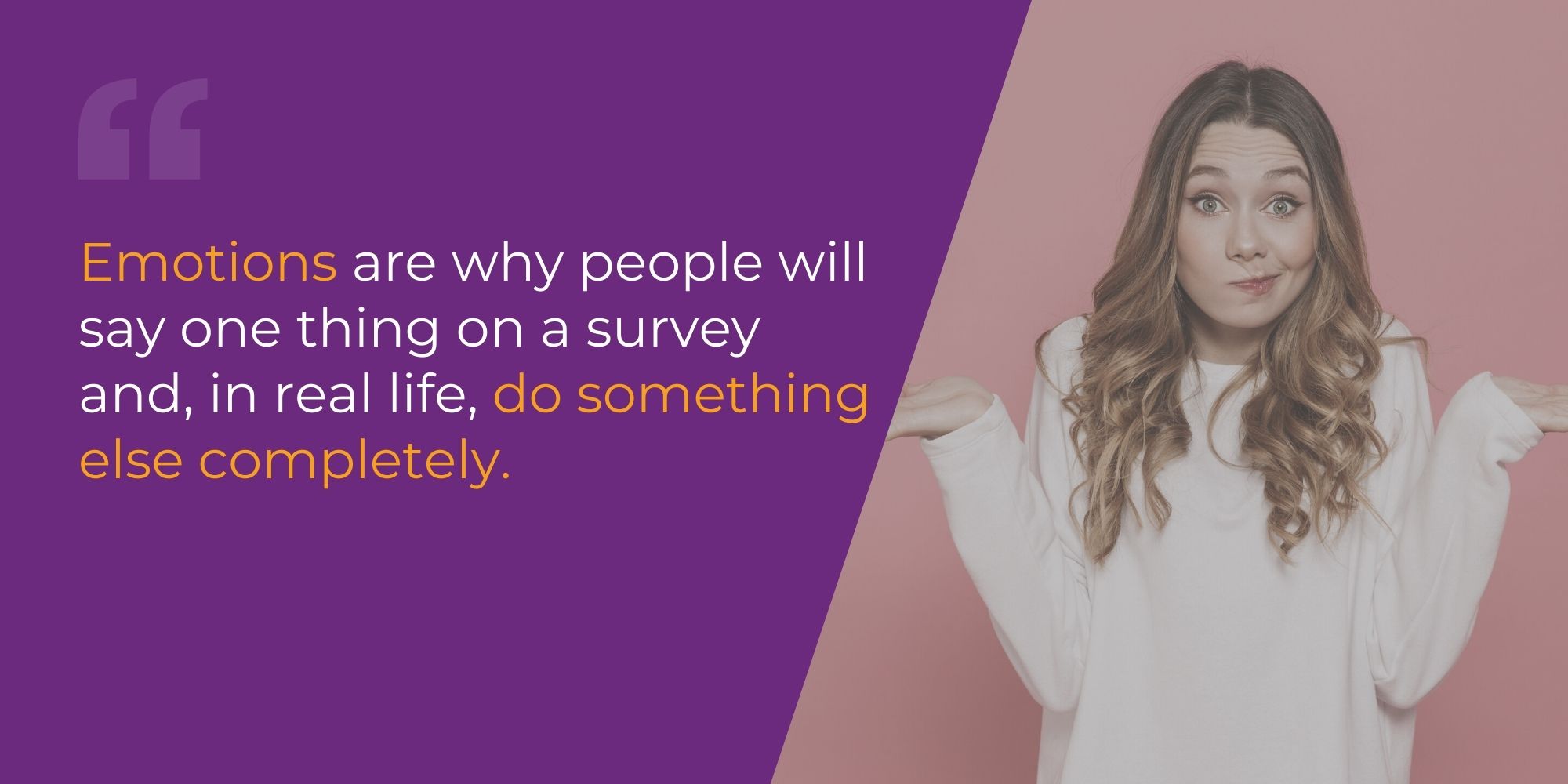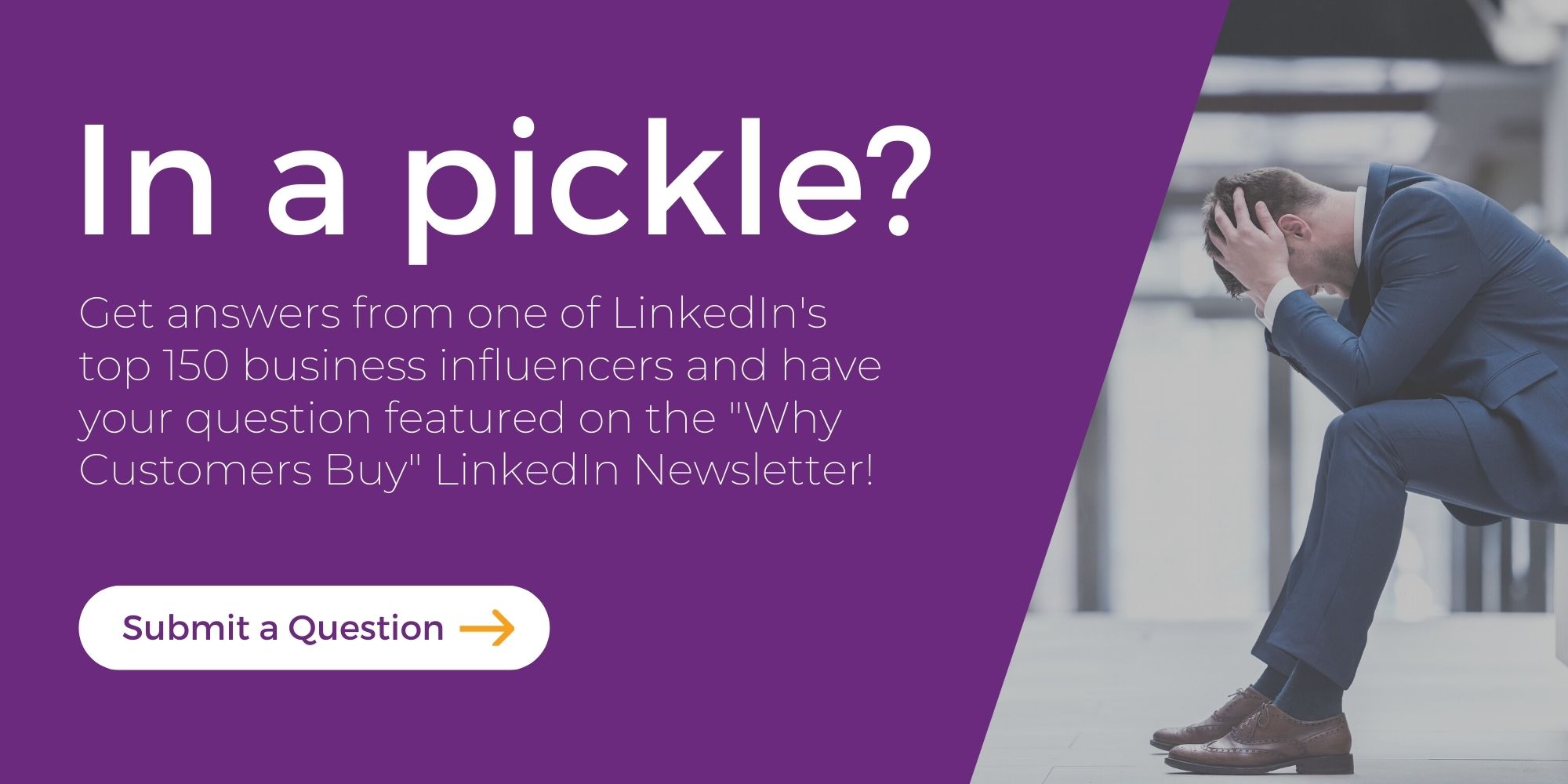Learn more about Colin Shaw: Join over 80,000 people on our LinkedIn Newsletter list or visit our website for more great podcast episodes.
Listen to the podcast:
You have a hidden impact on your return on investment for your customer experience management programs. This hidden impact kicks in between a given moment in your customer process and the customer behavior that results from it. While organizations know how to define the process and record the behavior, they usually miss this hidden impact. So, let’s discuss how to uncover what’s hiding there and how it affects your bottom line.
What brought this up was a podcast listener who had a pickle they wrote us about. Emily Davidson wanted to know how she could determine the value of what she is doing in her customer experience initiatives.

She asked the right blokes about this one. My global Customer Experience consultancy developed a research methodology that defines the hidden impact of your experience on customer behavior.
It All Started in Munich
The methodology was my reaction to a frustrating meeting in Munich. A financial services organization asked me how much money it would bring in if they did what I was telling them to do regarding improving the customer experience…and I couldn’t tell them.
After that, Beyond Philosophy spent two years working with the London Business School. We asked millions of questions from thousands of business people in hundreds of companies. Then, once we sorted through it all, we identified the Emotional Signature®.
The Emotional Signature measures how the experience makes people feel and what that means to the value they assign to your experience. So, you have an experience with some friction and frustration within it. In that case, you might have an Emotional Signature that disappoints customers, which leads to behavior outcomes you aren’t very excited to report.
However, the opposite is also true. So, if you have an emotional connection with customers that delivers feelings of happiness and pleasure, your outcomes will likely be much improved over an organization that doesn’t deliver those emotions.
Defining What You Value is a Fundamental First Step
The outcomes I mentioned are valuable. Value is fundamental here.
Value might be increased revenue and referrals or a greater likelihood that customers will tell their friends and family about you. Whatever you want to measure, that is the value. Moving the needle toward that increase in value is what emotions do. Therefore, you must tie your key initiatives to a value.
Not tying your efforts to a value is the downfall of many customer experience management programs. If you can’t show the numbers, you are no better off than I was in Munich all those years ago.
Over almost two decades, we have been gathering data about emotional influence on values. We know from our London School of Business Research that 20 emotions drive and destroy value.

You might notice that these are all specific emotions, and that is intentional. Not being particular about the desired customer’s feelings is a real problem. I see too many organizations talking about positive and negative emotions, which needs to be narrower. You have to understand which feelings are essential at a more granular level. Hence, this breakdown of the 20 emotions that drive and destroy value exists to help with that understanding.
Emotions are why people will say one thing on a survey and, in real life, do something else completely. A great example I use to illustrate this point is how Disney Theme Parks asked their guests what, if anything, they would change about their food options at the park. The survey responses came back that people wanted the option to get a salad. However, Disney knew people didn’t want a salad at the park; they wanted junk food.

Did the park guests deliberately mislead Disney? No.
Most likely, the respondents didn’t even know what they wanted to eat at Disney, or they did know but didn’t want to say so on a survey.
Bringing this back to Emily’s pickle about how to measure these things, we employ a process to get to this output. It begins by asking the client what the organization values. Do you mean market share? Do you mean advocacy? Repeat business? You might be surprised to learn that often, in this exercise, we learn that companies do not always know what they value.
However, this step is essential. By defining the business outcome that the organization cares about, we can plan how to track the indicators. We usually come up with a few value indicators, which are different things that can drive value.
Now, in this process, it is helpful to look at the following four-box model:

As you can see, the horizontal axis, Desired, is what customers say they want. The vertical axis is what Drives Value.
Two boxes are self-explanatory. Conscious, the top right customers say they want it, which drives value. There is no hidden agenda there. The same goes for Invisible; customers don’t want it, and it doesn’t drive value. So, again, no mystery was solved there.
The interesting boxes to me are Deception and Subconscious. These represent what customers said they wanted but didn’t drive value and what customers didn’t say they wanted but did. The former represents wasted money if you pursue it, while the latter demonstrates the power of the unconscious mind over customer behavior. Understanding these two boxes is essential to your bottom line.
Therefore, we seek to find the subconscious drivers of value with the Emotional Signature Research and sort out the other three boxes accordingly. We do this by looking at what you do to customers, asking them how they feel about different things, and then looking at their responses to value indicators.
Structural Equation Modeling
We discovered all this using Structural Equation Modeling. Structural Equation Modeling gets under the skin of things and finds the cause of customer behavior. The outputs of this modeling are expressed like branching trees. One side has inputs, and the other has outputs. Then, throughout, you have various paths that go in between and connect other things. The Structural Equation Method links different stages of data together to give you a beginning, a middle, and an end.
For example, one side has the customer process or the input. Then, on the other side is customer behavior, or the output. In the middle is the emotional response to the process that leads to the behavior.

Structural Equation Modeling is not proprietary. Anyone can use it. However, it does require training. That said, it is also a standard part of many statistical packages. In other words, it is not something you need to get from a mystic on a mountain; it’s accessible.
So, getting back to the four-box model and Emily’s pickle, it is important to identify whether what customers say they want is something you should do because it will produce value.
For example, a mobile company we worked with said customers wanted a reliable network. The mobile company had a 95 percent coverage area, so to update it, they would need to spend millions, and the improvement would be around two percent for a 97 percent coverage area. So, they had to decide if that would be worth it and drive their value needle. Ultimately, our client had reached the best they could do coverage-area-wise, so they had to keep looking for a way to move that needle.
We determined that instead of the coverage area, the mobile company’s money was better spent on simplifying customers’ billing experience and increasing bill delivery timeliness. We also addressed customer communications regarding wait times and overhauled how they handled their retail staff’s presentation.
However, we also discovered that customers wanted to buy from a company that kept its promises, created a relationship with them, and developed a community presence. The customers wanted a relatable mobile company brand.
Did they say so in a survey? Nope. Instead, our research showed that sponsoring the local kids’ soccer team drove value for our client. When push comes to shove for many customers, the human side matters most to them.
Moreover, this result is typical for us in the Emotional Signature exercise. In their research, a large construction company we worked with discovered that the construction clients didn’t want a rougher excavator as much as they wanted to know that the company “cared for them as a person.”
Knowing that feeling cared about as a person is essential to customers makes it easier to act. You can train people to communicate that to customers.
So, now, you can go to management and finance armed with statistics that say, “This is how much it will cost to train people, and that is how much return on investment we can expect from doing so.”
I don’t need the Emotional Signature research as much as others do. I believe in the influence of customer emotions on customer behavior and the importance of managing how customers feel about your company. Doing so will result in improved revenues and increased customer loyalty and advocacy.
Emotional Signature Research isn’t for people like me. It is for the skeptics who want to believe but need to see numbers first. Before they invest a ton of resources in fixing things or improving the customer process, they need to know that they will get money back on that investment. For Emily, the Emotional Signature Research can help her measure the effects of pursuing experience improvements and assign them value to her organization.
In my experience, most companies need to see the numbers. Fewer people will take your word for it and have faith that spending this money on improving the experience will work than those who need to see the numbers first.
Is your management team among them?
Thanks for reading, we appreciate you! Get access to your free ebook here, and why not tell a friend?

If you have a business problem that you would like some help with, contact me on LinkedIn or submit your pickle here. We would be glad to hear from you and help you with your challenges.


